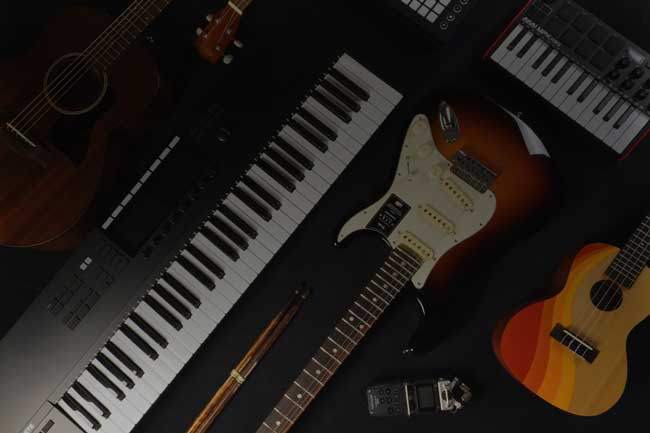- Catalog #: GAUSS-7
- BLACK
- PAIR
Gauss 7 2-Way Powered Reference Monitors - Pair
Modern mixing engineers can now experience the vintage sound feel of the world famous Gauss 7 Reference Monitors thanks to Avantone. You no longer have to search endlessly for an old pair of classic Gauss 7 Monitors that probably need a lot of TLC; you can now purchase brand new ones for the first time in a long, long while.
These nearfield monitors take the classic Gauss 7 Reference monitors from yesteryear and make them suitable for a modern context, offering all the old-school transient response of the original, with modern bandwidth and frequency-response specifications. With folded AMT drivers and a classic ultrasmooth tweeter, the monitors deliver accurate, detailed sound, as well as a wide sweet-spot, and precise stereo imaging.
- Classic Monitors in a Modern Form Factor
- Smooth Highs, Extended Low End
- Wide Sweet Spot and Precise Imaging
- 7" Ferrite Motor Woofer
- 2.5" AG-AMT Tweeter
- 180W Biamped Class-D Power per Monitor
- Balanced XLR and 1/4" TRS Inputs
- HF Trim, Acoustic Filter & Gain Controls
Hi-Fi AMT Drivers
At the heart of the Gauss 7 is the custom, patented-design GAU-AMT tweeter. The GAU-AMT provides accurate detail and precise stereo imaging, all while maintaining a small vertical throw. This reduces unwanted acoustic reflections in a room, which helps minimize phase issues in an acoustic environment.
GAU-AMT's impressive transient response comes from it's 65mm polyethylene terephthalate (PET) film folded membrane. PET film was chosen for its low-resonant-frequency qualities. It also hosts a comparatively low crossover point while still providing exceptional high-range frequency extension. The assembly is mounted in its own enclosure to prevent the backwave pressure from the woofer.
Clean and Smooth High End
The high-end frequency response (up to 22 kHz) makes for an exceptional reference monitor for a massive range of music and sound materials. Air frequencies aren't just audible, but very smooth.
Full and Round Low End
Gauss 7's woofer takes great inspiration from the company's AV10-MLF white cone woofer, though it has been reengineered for the Gauss. The woofer cone is a pressed design, made of the same proprietary blend of wood pulp and glass fiber found in the CLA-10 series woofer (AV10-MLF), though reinforced with sheer mass. This provides the hard snap and fast transient response of the CLA-10, but with much more low-end. Tighter voicing isn't going to be heard here; Gauss 7 provides a wide bandwidth for fantastic midrange and great low-end reference.
Intelligent Design
The woofer's motor structure is made of low-carbon 1008 steel, enabling the highest about of magnetic flux density between the pole piece and top plate. To top it off, the surround of the woofer is a Japanese unidirectional styrene-butadiene rubber (SBR), which optimizes the power and excursion of the woofer.
A rear-firing bass port gives Gauss 7 a controlled yet punchy low end, quite different from the typical overhyped low end found other speakers in this price range.
Multiple Points of Connection and Tuning Controls
Balanced XLR and 1/4" TRS inputs make connections a breeze, but it takes a bit more than just that alone to give a monitor strength. The back panel of Gauss 7 has powerful yet easy-to-use acoustic tuning controls, perfect for tuning the system to your room. A three-position Acoustic Placement switch allows you to optimize Gauss 7 to boundary spaces in your room. And a three-position High Trim switch helps refine additional room issues. Each individual monitor has its own gain control for proper system calibration.
Specifications
Studio Monitor
Monitor Type
- Active 2-Way
Enclosure
- Bass-Reflex
Power Rating
- 180 W
Drivers
- 1 x 7" / 177.8 mm Cone
- 1 x 2.5" / 63.5 mm Tweeter
Amplification
- 1 x Low-Mid Amplifier: Class-D Rated at 120 W
- 1 x HF Amplifier: Class-D Rated at 60 W
Performance
Frequency Range
- 30 Hz to 22 kHz
Maximum Sound Pressure Level (SPL)
- 103 dB
Total Harmonic Distortion (THD)
- 0.5%
Phase Adjustment
- None
Signal Processing
EQ
- HF Shelf: -2 to +2 dB (2 dB Increments)
Connectivity
Audio I/O
- 1 x 1/4" TRS Balanced Female Analog Input
- 1 x XLR Balanced Female Analog Input
Power
AC Input Power
- 110 to 240 VAC, 50/60 Hz
Power Consumption
- 0.5 W (Standby)
- 250 W (Maximum)
General
Dimensions (W x H x D)
- 9.3 x 15 x 8.3" / 23.5 x 38.1 x 21.2 cm (Each)
Weight
- 18.1 lb / 8.2 kg (Each)





